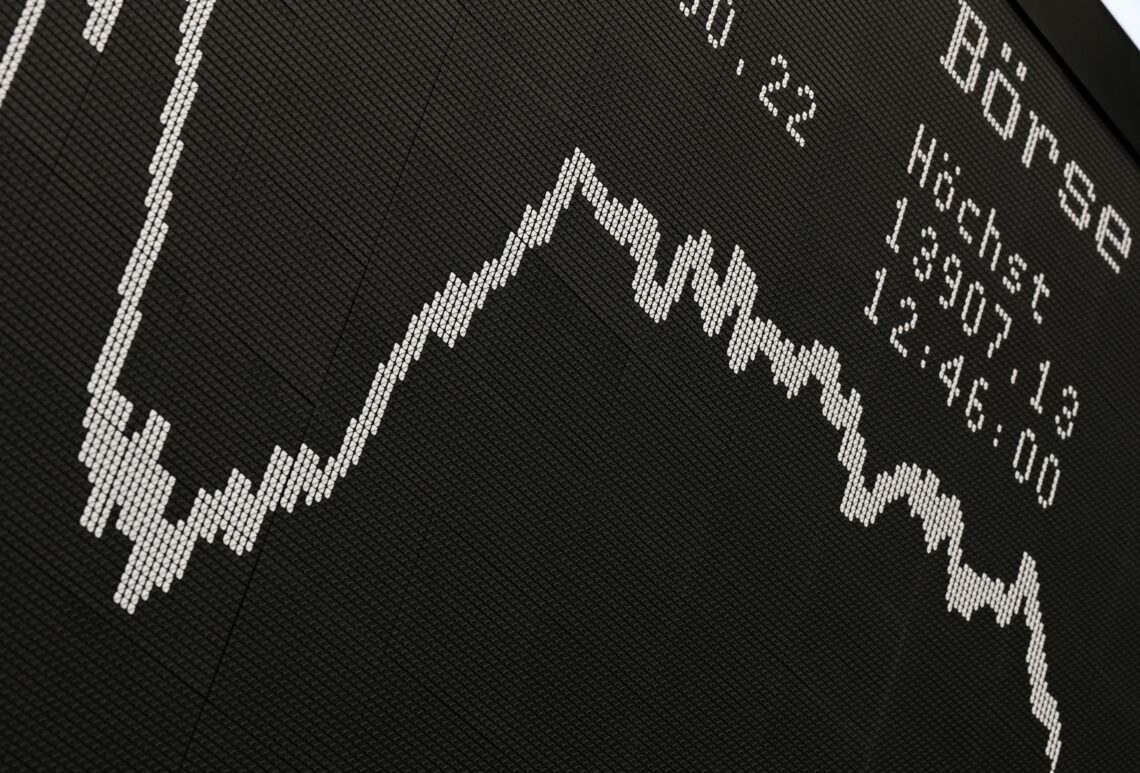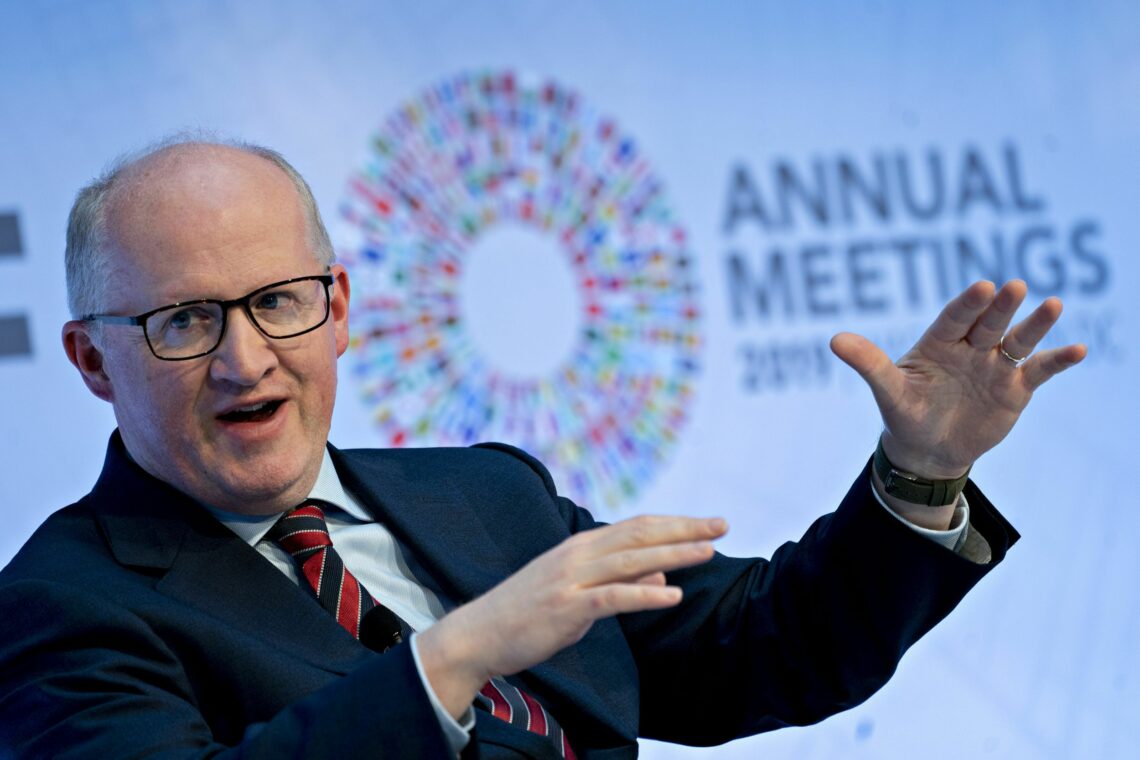The ECB and bringing financial markets down to earth
The Covid-19 crisis has capped a decade of economic crises that the European Central Bank (ECB) has had to deal with. In the post-pandemic era, the ECB has relied on unprecedented degrees of monetary policy, a dependence which the bank must now address.

In a nutshell
- The ECB is currently navigating uncharted monetary policy waters
- At some point, it will have to return to more orthodox activity
- Doing so could unnerve markets, but there is hope for a smooth transition
This GIS 2021 Outlook series focuses on the opportunities that stem from the upheaval of the past year.
Since 2008, monetary policy has continuously reinvented itself. Over the past decade, the European Central Bank (ECB) has had to cope with a series of epic challenges: the global financial crisis, the Great Recession and the European sovereign debt crisis. Topping these all off is the coronavirus pandemic, responsible for the severest economic contraction in modern history and, presumably, long-lasting scars to the eurozone, many of which will only become apparent in the months and years to come.
Some say that, from one storm to another, the ECB in the post-pandemic era is navigating in the dark, steering a boat whose destination remains unknown. Policymakers have had to develop extraordinary crisis management skills by learning on the fly. With the outbreak of the pandemic, the uncertainty the central bank is facing has reached unseen dimensions. All eyes are on the ECB’s leadership, who must move decisively.
Initial panic, heavy artillery
That things can go wrong became manifest in the early days of the health crisis. In March 2020, the ECB announced a generous emergency package that included additional net asset purchases of 120 billion euros, an easing of conditions for its longer-term refinancing operations and – unimaginable only a year ago – a temporary lowering of capital requirements for lenders. Despite all this, financial markets spun into a panic, literally within hours.
What unnerved them was President Christine Lagarde’s declaration that it was not the ECB’s responsibility to protect highly indebted eurozone countries. “We are not there to close spreads,” she said at a press conference on March 12. Italian bond yields immediately shot up. Sovereign bond spreads rose to dangerous levels as investors doubted the ECB’s willingness to shield the eurozone and its currency from financial instability.
What had started as a health crisis was about to turn into a financial crisis.
The ensuing tightening of euro area financial conditions could not have happened at a more inopportune time. In response to the coronavirus outbreak, countries decided to shut down their economies and load up piles of new debt. What had started as a health crisis was about to turn into a full-blown financial crisis, with “self-fulfilling and destabilizing price spirals and fire-sales,” warned Isabel Schnabel, an executive board member of the ECB.
She was among those who prompted the ECB to backpedal on Ms. Lagarde’s initial position. Markets’ confidence in the institution was at stake. To the question of whether the ECB was ready to help Italy, another member of the six-person executive board, Fabio Panetta, replied: “We will do everything we have to, within our mandate.” ECB chief economist Philip Lane, also a member of the bank’s board, called leading investors and bankers to reassure them personally.
A few days after President Lagarde’s faux pas (which Mr. Panetta excused as one of those “isolated events that may occur in the heat of the moment, at a time of immense pressure and hard work”), the ECB rolled out its heaviest artillery so far: the 750 billion-euro Pandemic Emergency Purchase Programme (PEPP). “The ECB will not tolerate any risks to the smooth transmission of its monetary policy in all jurisdictions of the euro area,” the Governing Council stated.
In the meantime, PEPP has been extended twice. Its envelope was increased by 600 billion euros in June, and 500 billion euros in December, bringing it to a total of 1.85 trillion euros. The horizon for net bond purchases under PEPP, to be conducted with “great flexibility,” has been prolonged to at least March 2022. Reinvestment of PEPP bonds reaching maturity will continue for many more years. The same goes for the ECB’s existing asset purchase program (APP), running at a monthly pace of 20 billion euros, for an indefinite period.
Personal outreach
The strategy of massive liquidity support through various bond-buying instruments eventually paid off – at least in the short run. By June, markets had calmed down. Spreads had decreased, funding conditions had improved. What certainly helped to cap bond yields was the prospect that the ECB could own 40 percent or more of Italian, Spanish and Greek sovereign bonds by the end of 2020.

Another factor that may have helped ease markets’ fears is Mr. Lane’s personal outreach to bankers and investors. What in March appeared as an almost desperate initiative to make up for a blunder seems to have become a habit for the ECB, if not to say, a new tool. After each monetary policy meeting, and just before the press conference at which President Lagarde announces the bank’s decisions to the world, the chief economist makes his phone calls to influential investors.
Even in the highly unconventional era when Mario Draghi led the bank, such actions would have been unthinkable. The time-honored practice was to deliver information to all market participants at the same time. Mr. Lane has deliberately broken with that tradition. He defends his private calls as a way to receive “feedback” from the market.
Mr. Lane has not specified who exactly he calls, what he says or if his counterparts influence the policy decisions. What is clear is that in the post-pandemic period the ECB is using all means to act on market expectations. With public debt levels so high, the institution wants to avoid a situation in which financial markets sanction governments for actions it urges them to take.
Self-fulfilling fears
A disaster scenario that remains vivid in policymakers’ minds is when, in 2012, investors suddenly presumed that Greek debt was too risky to hold. As a result, the spreads on the debt became so high that it had to be classified as risky, making investors’ worries self-fulfilling.
It is fear of high debt, rather than high levels of debt per se, that triggers panic in financial markets. The public debt of 300 billion euros (or 160 percent of GDP) that had brought Greece to the brink of default in 2012, and almost broke apart the entire euro area, was not that high after all, at least compared to what we see today in many eurozone countries.
For now, few are expressing doubts about governments’ creditworthiness.
In the first 10 months of 2020, the eurozone, taken together, had already issued close to 1 trillion euros of additional debt. By mid-2020, debt-to-GDP ratios had shot up in Greece (187.4 percent), Italy (149.4 percent), Portugal (126.1 percent), Belgium (115.3 percent), France (114.1 percent), Cyprus (113.2 percent) and Spain (110.1 percent). For now, few are expressing doubts about these governments’ creditworthiness. Financial markets are quiet, while the real economy is in disarray.
Has the ECB succeeded in assuaging markets’ anxiety with the message that all euro area debt is safe because of its unlimited support? As long as investors remain convinced by this powerful narrative (and as long as interest rates remain extremely low), markets seem to hold steady.
New risks and opportunities
In a world of constant change and radical uncertainty, however, such balance rarely lasts for long. As the ECB’s November 2020 Financial Stability Review (FSR) points out, a range of new risks could build up in the medium term.
While some eurozone countries may experience a recovery in 2021 or 2022, others may not. If the ECB decided to wind down its stimulus too early, the move could well pull the bloc into another sovereign debt crisis, this time of unprecedented scale. The FSR briefly mentions “cliff-edge risks” if withdrawal is not managed carefully.
The exit from ultra-accommodative policy schemes will likely be the greatest challenge the post-pandemic era poses for the ECB. The problem is that, as long as there is one eurozone country lagging, the ECB cannot backtrack. Fears about debt sustainability emerge in the blink of an eye, threatening the eurozone once again. Italy, whose nominal public debt already exceeds 2.5 trillion euros, could be the trigger, all the more so since it has been so hard-hit by Covid-19. Spain could become the other problem child if its left-wing coalition government becomes too spendthrift.
ECB could ensure that the transition to a healthy economy is as smooth as possible.
Euro-area banks’ weak profitability is another matter of concern. Banks are certainly better capitalized than before 2008, but that may soon change now that they are encouraged to use their capital buffers to lend to struggling firms and households.
Credit risk is on the rise, which indicates that banks will eventually face significant losses due to clients’ insolvencies. As “zombie” firms proliferate in the global business landscape, the nonperforming loans that were so hard to deal with after the global financial crisis will again begin to weigh significantly on banks’ balance sheets.
The deterioration of asset quality, combined with a chronic lack of profitability, could cripple the banking sector. The FSR also notes a growing fragility in the (less regulated) nonbank financial sector, where the risk-taking goes virtually unhindered. It is another possible time bomb that the ECB will need to monitor closely.
Finally, given the uncertain economic outlook, and despite the ECB’s failure to even come close to its 2 percent inflation target, some asset prices are likely to rise in the coming months, as investors flee to safety. A few EU countries are already experiencing booming residential and corporate real estate markets, exacerbated by the post-pandemic ECB’s emergency responses. As the FSR warns, possibly severe “market corrections” can be expected when asset bubbles burst.
Outlook
Market corrections and disruptions are inevitable. Zombie firms and weak banks should be the first to fall in the adjustment process. That will hurt, but the ECB could stand out as the critical player, ensuring that the transition to a healthy economy is as smooth as possible.
The ECB cannot keep financial markets on painkillers forever. But when it begins to take them away, relations between the bank and markets could quickly become tense again, with all that implies. Eventually, the ECB’s stance will need to be less paternalistic and, as economist Oliver Blanchard says in a recent memo, more “honest.”
It could start by signaling to markets that indebted eurozone governments must begin to act more responsibly. For the moment, the ECB’s multitrillion stimulus programs are, to quote Mr. Blanchard, “all carrots and no sticks.” So far, it has not attached any conditions to its sovereign lending during the pandemic. That will have to change if the ECB is to maintain markets’ confidence in the long run.







